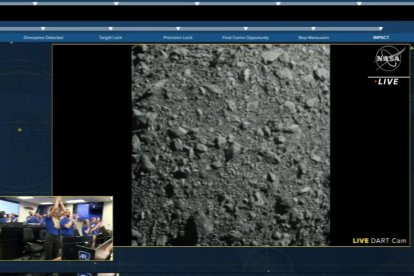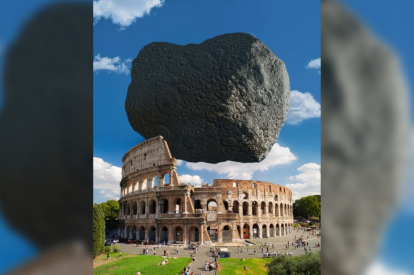DART: NASA's first planetary defense mission successfully completed
The special ship crashes into the Dimorphos asteroid in a trial run. All to demonstrate the human ability to deflect threats to Earth.

Captura de video/ NASA
The target chosen by NASA to be the first planetary defense mission test has been successfully completed - for now - after the DART spacecraft crashed into the Dimorphos asteroid.
The asteroid posed no risk to the Earth, it is simply a test to demonstrate the human ability to modify the trajectory of any meteorite heading towards our planet that could cause the end of humanity. However, to see the true results of the mission we still have to wait: "In the next two months we will have an exact confirmation of what change is achieved by studying the orbital changes," said Elena Adams, DART's systems engineer.
DART which stands for Double Asteroid Redirect Test, had been flying in space for a year, but the Johns Hopkins University Applied Physics Laboratory began this project in 2015.
The asteroid was 160 meters in diameter, which means it would similar in size and space to that occupied by the Colosseum of Rome. The European Space Agency (ESA) made a comparison in a photograph.

DART, Colosseum of Rome
"Crashing a spaceship.. And no, this is not a movie plot"
NASA Director Bill Nelson summarized hours before impact what DART was all about: "Tonight, NASA will crash an uncrewed spacecraft into an asteroid. By the way. On purpose. Yes, you read that correctly. And no, this is not a movie plot."
Following the impact, NASA's top official said that "it has been years of hard work, innovation and creativity" and thanked the effort of the "international team" that has achieved it: "We are demonstrating that the defense of our planet is a global task and it is quite possible to save the planet," he said.
For her part, Nancy Chabot, DART coordination manager, acknowledged that we've been planning for this moment, talking about it for years, and I knew it was going to be spectacular, but it has exceeded all my expectations. I don't have to talk about it as something that's going to happen anymore, it's already happened, and I'm very proud to have been part of this team, as I know all my teammates are too."
The wait for NASA's next historic DART-related mission will extend until late 2024, when the Hera spacecraft will head toward the Dídymos system to conduct an in-depth study of the impact's aftermath.
RECOMMENDATION





















